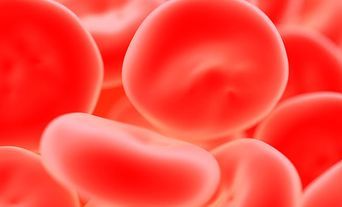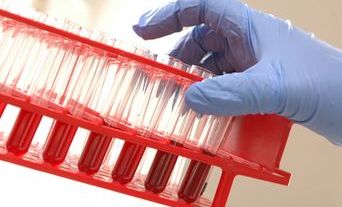Approximately 2 million units of blood and components are issued from the four UK blood services each year as potentially lifesaving treatment for many patients. The advent of the Serious Hazards of Transfusion (SHOT) haemovigilance scheme in 1996 facilitated the UK-wide reporting of adverse reactions and events across the whole transfusion pathway, whether clinical or laboratory-based, with feedback of results and lessons learnt to improve practice. As part of this reporting framework, the SHOT scheme allowed error reports and near-miss events that occurred in transfusion laboratories from many organisations to be evaluated. This enabled the common themes to be identified and, subsequently, recommendations for improvements in practice were developed.
Setting up the UK Transfusion Laboratory Collaborative
In 2006, an initiative was launched by SHOT in conjunction with the Royal College of Pathologists, Institute of Biomedical Science, British Blood Transfusion Society, UK National External Quality Assurance Scheme and the NHS England National Blood Transfusion Committee and its equivalents in Scotland, Wales and Northern Ireland. This initiative led to the formation of the UK Transfusion Laboratory Collaborative (UKTLC).1,2
The UKTLC principally aims to:
- achieve and maintain a consistent advisory approach to the regulations and standards for transfusion practice through dialogue between stakeholder organisations. These partners include the Blood Safety and Quality Regulations (BSQR), the Good Practice Guidelines (GPG), Joint UK Blood Transfusion and Tissue Transplantation Services Professional Advisory Committee (JPAC) and the British Society for Haematology
- influence positive changes within the transfusion community through the identification and promotion of best practice• improve patient safety and care through collaborative guidance to the UK transfusion community
- promote staff and patient safety with informed recommendations regarding staffing levels and competency within UK transfusion laboratories.
The initial UKTLC surveys and results
SHOT data consistently demonstrates that 30–40% of serious wrong blood event errors originate in the hospital blood transfusion laboratory, with a disproportionate number occurring outside core hours. To understand the status of laboratory practices and the challenges faced, two UKTLC surveys were conducted in 2007 and 2008.
The surveys revealed a lack of formal transfusion knowledge and noted that lead transfusion scientists were not available in core hours due to shift patterns. It was found that a majority of the 53% of laboratories with agreed capacity plans were routinely running services below the levels required by their plans. Only 49% of laboratories had the ability to perform electronic issue of red cells.3
Development of UKTLC standards
In the absence of any formal guidance on laboratory standards, the UKTLC developed a series of recommendations in 2009 based on the results of these surveys.1,2 The recommendations were designed to help hospitals achieve the minimum standards of proficiency and practice set by the Health and Care Professions Council (HCPC)4 and the UK Blood Safety and Quality Regulations.
The standards clearly defined the minimum expectations for staff levels, skill mix, qualifications, training and competency, and the use of information technology. This level of clarity in the requirements for safe practice had not been available previously and provided laboratory management with a tool to benchmark against a gold standard.
Compliance with these recommendations was expected to lead to a 50% reduction in laboratory errors. However, in reality, the 2012 SHOT report found an error reduction of only 12%. The 2013 UKTLC survey demonstrated that a significant number of laboratories had not addressed many recommendations and IT errors appeared to be increasing; the general feedback was that ‘although the recommendations were excellent, management saw them as recommendations that carried no mandatory action requirement’.3
Therefore, in 2014, the recommendations were redrafted as evidence-based standards supported by the Medicines and Healthcare Products Regulatory Agency (MHRA) to be used by the inspectorate as part of the inspection program.3 Later, the UK Accreditation Service (UKAS) also came to adopt the standards for accreditation purposes in transfusion laboratories.
Survey of laboratory culture in 2019
A 2019 report published by the UKTLC noted that challenges continued with staffing, particularly recruitment of suitably trained biomedical scientists, and with funding and time for training and education.6 A survey of laboratory culture was held in 2019, following reports of disciplinary action towards staff involved in transfusion errors.7 Responses sadly noted that staff felt under pressure from line managers and senior staff to present an unrealistic impression of their laboratory's compliance with the GPG to appear more in line with the Blood Safety and Quality Regulations5 and the MHRA's blood compliance report. Staff reported that they felt reluctant to work in transfusion and were leaving or taking early retirement, citing the pressure in delivering both a safe transfusion service and fulfilling regulatory requirements. The report was instrumental in exposing the pressures affecting staff in transfusion laboratories and raised the importance of a just culture in the provision of a safe service. An effective, efficient, evidence-based, patient-oriented and equitable laboratory service depends on adequate numbers of scientific staff. Personnel are an organisation’s most valuable asset; staff training, qualifications, competency, appraisal and continuing professional development are vital to enable staff to meet the quality objectives of the laboratory.8
Further challenges and next steps
Recovering from the pandemic
The COVID-19 pandemic introduced yet more challenges for transfusion laboratories and the wider health service, particularly in terms of staffing level stability, recruitment to vacant posts and staff training. Laboratories were quick to respond with innovative training programmes by harnessing the virtual conferencing systems that exploded onto the market.
As the NHS continues to respond to staffing challenges, a backlog in workload and advancing technology, the UKTLC will continue to support transfusion laboratories to provide a safe service. In addition to updating the standards in 2022, the group now has a dedicated page on the SHOT website with access to survey reports and other useful resources for laboratory staff and management. The formation of pathology networks in England is also challenging for the provision of safe transfusion services. The UKTLC’s recently distributed 2022 survey incorporates questions on the impact of the pandemic and pathology networks on transfusion laboratory practice, both positive and negative.

Improving service standards
The UKTLC has demonstrated the power of collaborating with multiple professional organisations towards a common purpose to identify issues in the workplace and enact change. The standards are utilised in regulatory inspections by the MHRA and assessments under ISO 15189 standards by UKAS. Transfusion managers can support safe practice by using the published standards to benchmark and escalate staffing issues or a lack of IT. Both the MHRA and UKAS now have representation on the UKTLC group to provide opportunities to contribute to the minimum standards, now being updated for release in 2023. The 2023 revision of the standards aims to update the modern recommendations, considering the current and future changes in blood transfusion laboratory practice.
Future outlookThe current challenge facing the UKTLC is raising awareness of the group and its work. The team plans to increase its social media presence by opening a Twitter account and taking part in online education events such as the National Health Service Blood and Transplant Biomedical Scientist Empowerment Group. The team is keen to offer practical support to laboratory managers and is developing resources for the SHOT website, such as capacity plan examples. In the ever-changing healthcare environment, it is vital that laboratory staff are provided with the knowledge and skills to perform their role effectively. Safe practice must be supported with access to adequate equipment and IT. The UKTLC standards provide the foundation on which a safe laboratory transfusion service must stand.





